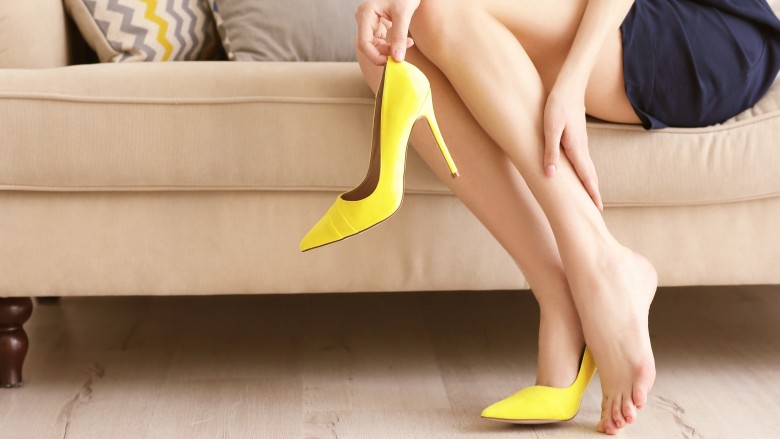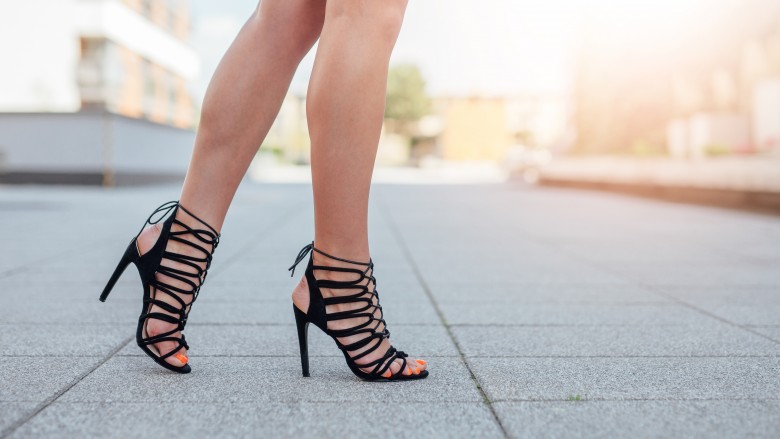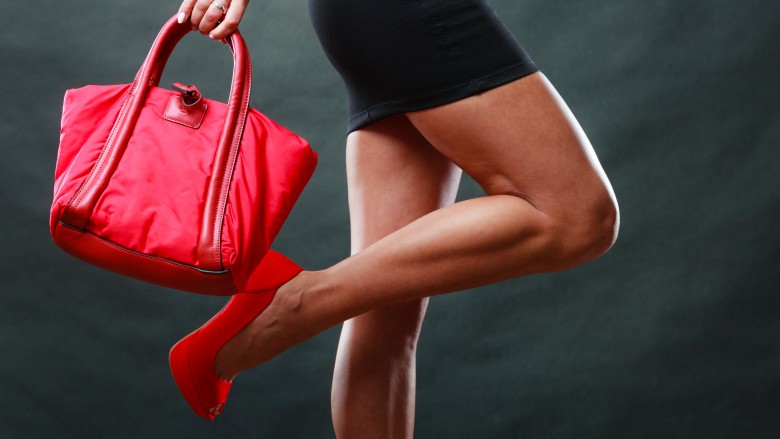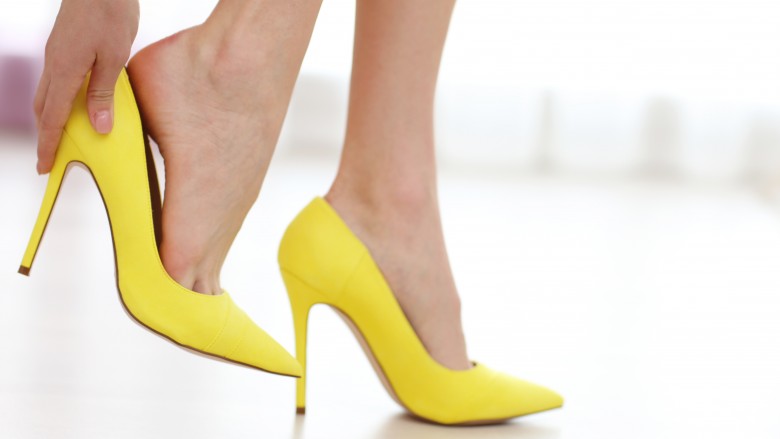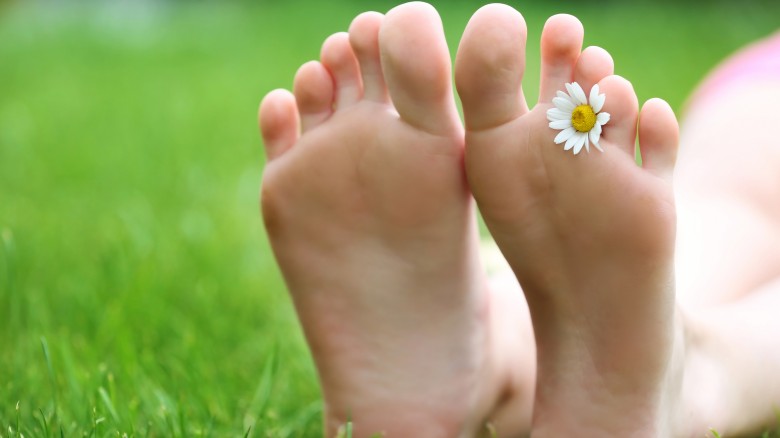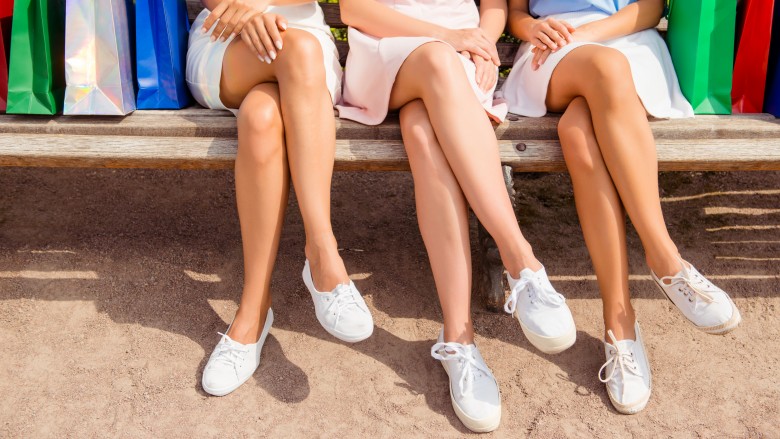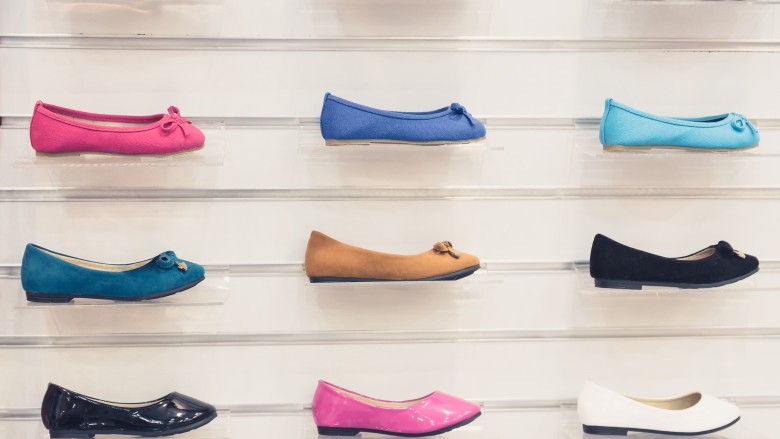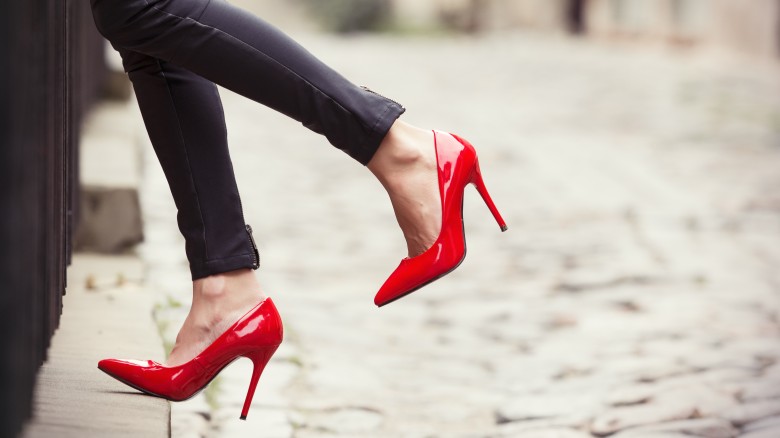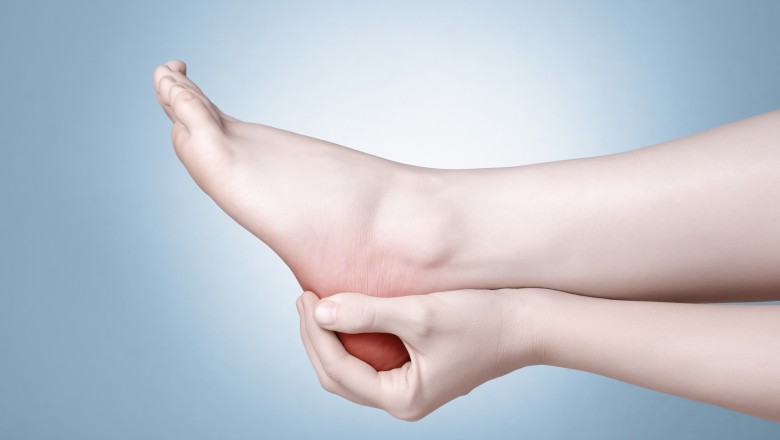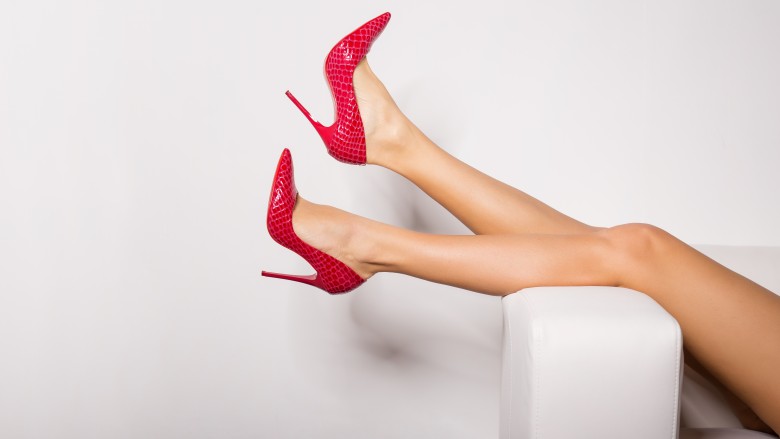Reasons To Ditch Your High-Heeled Shoes
High heels are fashion's most double-edged sword. A killer stiletto can make or break an outfit, adding the perfect dose of sexiness. Or there's the classic pump, which is incredibly chic. But have you ever actually walked in heels? They can be murder on your feet. Every time I wear a pair, I love how they look. But after an hour, I am ready to set them on fire and exchange them for sneakers. The next day, my toes hurt. My calves are sore. My back aches. The balls of my feet are tender and hard to walk on. Why do we wear heels when our bodies react so adversely to them?
The American Osteopathic Association (via CNN) reports that one in 10 women wear heels three times per week, so clearly, they remain beloved footwear. Even if you're of the Carrie Bradshaw-like mindset of "all heels, all of the time," there are plenty of reasons that should and could convince you to ditch your heels.
After you learn what they do to your body, you might rethink your position on pumps.
They can cause serious back problems
Dr. Junella Chin, an osteopathic physician, confirms that heels can cause conditions like scoliosis. "When wearing high heels, a woman's body needs to compensate in order to stay balanced and not tip over. The body does this by forward bending at hips and spine." Chin explained that the body reacts with postural compensation to help maintain balance, which can cause a permanent change in the curvature of the spine.
Chin further states, "When wearing high heels, the knees tent to go into hyperextension — the knee locks up and bends backward. This will weaken the knee joint and ligaments around it. This also translates to tighter hamstring muscles, and ultimately affecting low back and posture." Ouch!
They cause plantar fasciitis, hammertoes, and more
According to Chin, wearing heels also strains the plantar fascia, which connects your heel to your toes and supports your arch, causing plantar fasciitis. She explains, "Once you get plantar fasciitis, it takes a long time of rehabilitation, icing, and exercise to recover." That's to say nothing of hammertoes, which occur due to pressure on the toes, or osteoarthritis of the knees.
Anyone else reaching for a pair of sneakers or flats?
They get worse when you add a purse
Heels create a lot of physical issues that should not be understated. Dr. Kousouli, who wrote the book Be a Master of Maximum Healing, warns that wearing heels worsens posture. If you add a heavy purse over one shoulder, which so many of us do, you compound the problems already activated by heels. Per Dr. Kousouli, hips and shoulders will further sag with this combo. Who knew that accessorizing your outfit could have this many adverse affects on the body and ultimately threaten your status as a healthy bipedal being? It's clearly not just a pair of shoes and a purse.
They alter the lower leg
Mike Kneuer, a personal trainer and corrective exercise specialist from the National Academy of Sports Medicine, points out that "consistently wearing high heels has been shown to alter the muscles and tendons in the lower leg. The fibers in your calves will become shorter and your Achilles tendon can stiffen and get thicker." But here's the kicker. He furthers, "Shortened calves while wearing your heels won't be a problem, but you you wear regular shoes or sandals, you may get pain and discomfort in your Achilles and calves because they are being taken past their normal (altered) range of motion."
They alter the foot
Dr. Karen Erickson, a spokesperson for the American Chiropractic Association, can tell when a patient lives in heels. "The feet take a permanent 'Barbie Doll' position," she said. "The Achilles tendon shortens after just three hours of heels a day." Ever play with Barbies? The foot is beyond arched, because she is a manufactured toy, not a living person. Having the foot become unnaturally formed should be reason enough to have you rethinking heels.
They are high-maintenance, requiring post-wear exercises
Heels require lots of post-wear exercise to help the body recover from the stress they cause. Can you say high maintenance? Dr. Emily Splichal (aka Dr. Legs) explains that if you need to wear heels for work or a night out or a formal occasion, "stiletto recovery" is key to reducing the damaging effects of high heels. It's a practice called roll, release, and restore. You roll your foot on a golf ball or RAD Roller for five minutes, release toe muscles for five minutes with Correct Toes, and restore calves and hips with five minutes of yoga on a Naboso Yoga Mat.
Kneuer recommends stretching calves after wearing heels to minimize negative consequences, while podiatrist and Vionic Innovation Lab Member Dr. Jackie Sutera recommends practices like icing, stretching the calves, and massaging the Achilles, forefoot and arch to help heal the feet. Erickson suggests practicing balance by standing on one leg at a time and holding for 30 seconds and walking 30 minutes per day in sports shoes to support a normal gait.
There really is quite a cool down period that comes after wearing heels. It also seems like a lot of extra work just to wear a sexy shoe.
There are tons of cute alternatives
Wardrobe stylist and fashion expert Cristina Pearlstein, founder of How Do You Fashion, reminds us that recent runways are "fashion's way of giving us all real permission to toss the heels and embrace comfort. Between the rise of the athleisure and menswear trends alone, there are so many cute and fashionable flats out there these days that there's no reason for your feet to suffer."
Pearlstein points to styles such as Adidas Stan Smith, Superga, Vans, and Converse Chuck Taylors as "not only accepted by fashion girls everywhere, but they're avidly worn by them." If you need or want a dressier option, "the ballet flat has a new and improved cousin — the pointy-toe flat. They're fun, feminine, and come in so many colors and styles that it's easy to find the right ones for work, weekend, or even a black-tie affair." Because #choices.
They are dangerous
Let's face it. Not all of us are Rihanna, who can walk over a subway grate while wearing stilettos! When teetering on towering high heels in a crowd or on a slick surface, your balance is less than stable. You can easily take a tumble and twist your ankle or sprain it. Dr. Alexis Dixon, orthopedic surgeon at DISC Sports & Spine Center, says, "Falls aren't uncommon. Ankle sprains can be mild and improve with physical therapy, but severe sprains can lead to chronic instability and require surgery. Ankle fractures, likewise, can occur via the same mechanism, and sometimes require surgery." Yikes! Still thinking about all heels all of the time? Dr. Dixon also pointed out that, "Even in the best case scenario, it's hard to feel cute in a walking boot or cast after an injury." #Truth.
It's not too late to reverse the damage
If you are an affirmed heels wearer and are thinking, "Why stop now, because the damage is already done?," well, you need to understand that you still have time to reverse any possible damage you may have done to your feet and spine. It's never too late to wean yourself off heels and to allow your body to recover. Sutera notes that ditching heels for flats with proper absorption ASAP will lead to "alignment in the skeleton being restored and the body [attempting] to heal and reverse some of the potential damage and inflammation that was caused." So don't labor under the illusion that you shouldn't bother to ditch heels because you've already messed up your feet, OK?
There are ways to make heels safer
If you still feel you must wear heels for whatever reason — and there's no shaming going on here, we love them, too — Dr. Erickson has some suggestions. Don't go higher than two inches, and don't wear them more than three hours per day. Keep those heels in your wardrobe with limits, and with your health and body taking priority.

